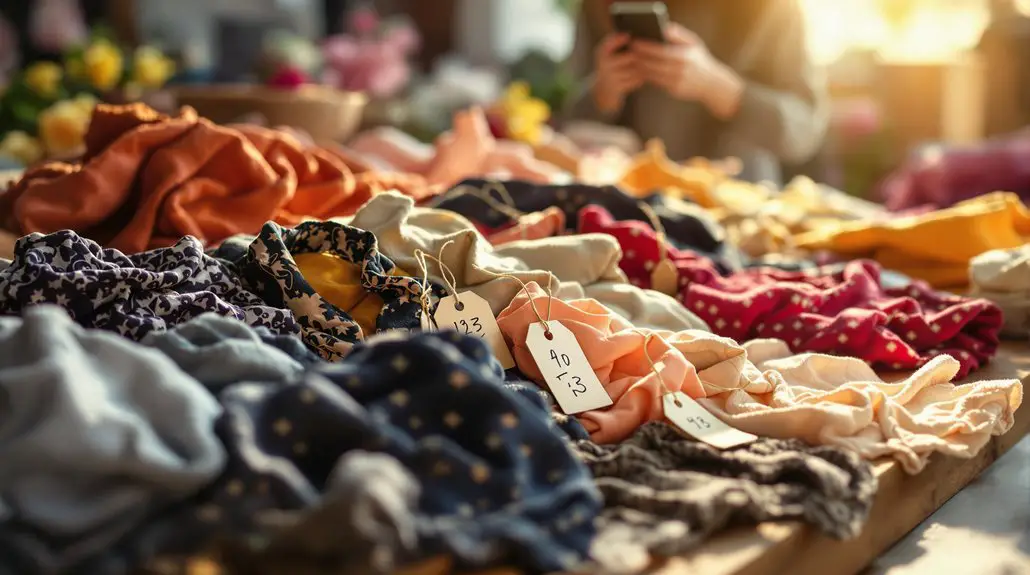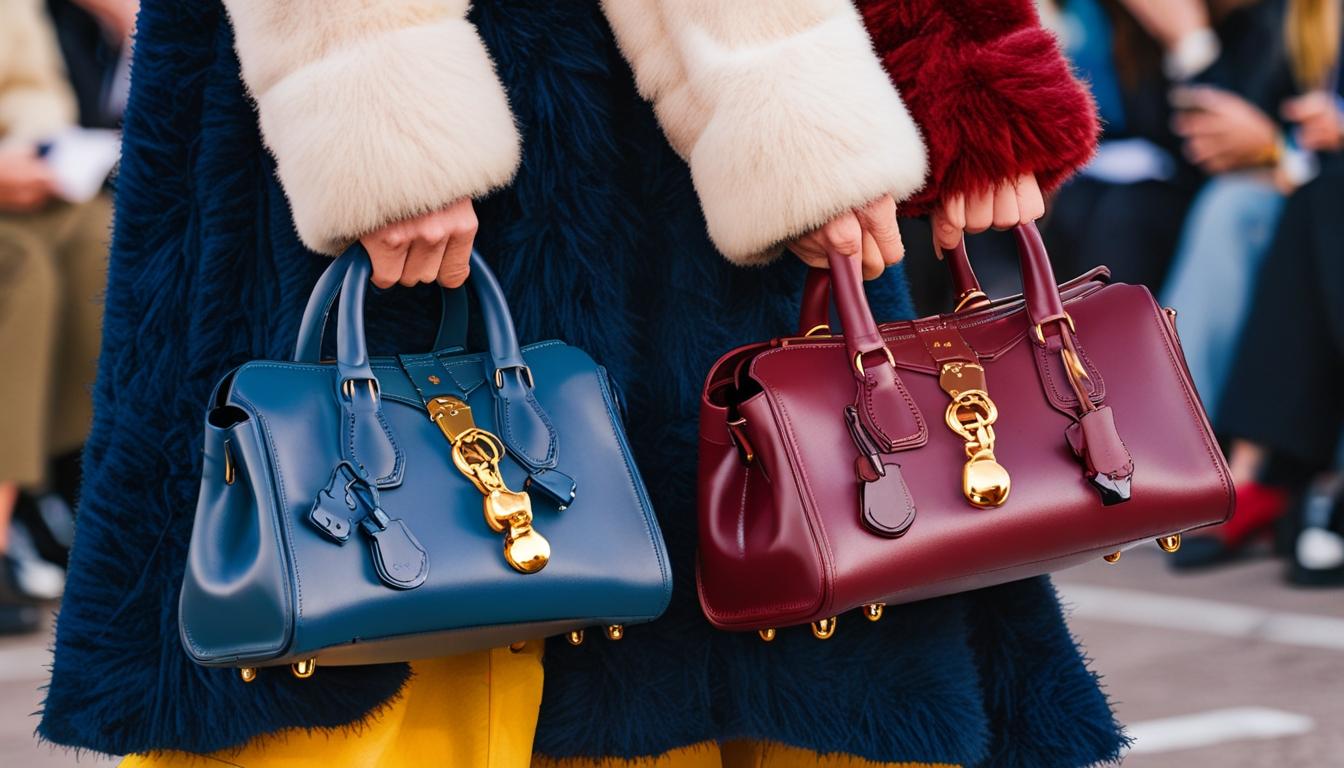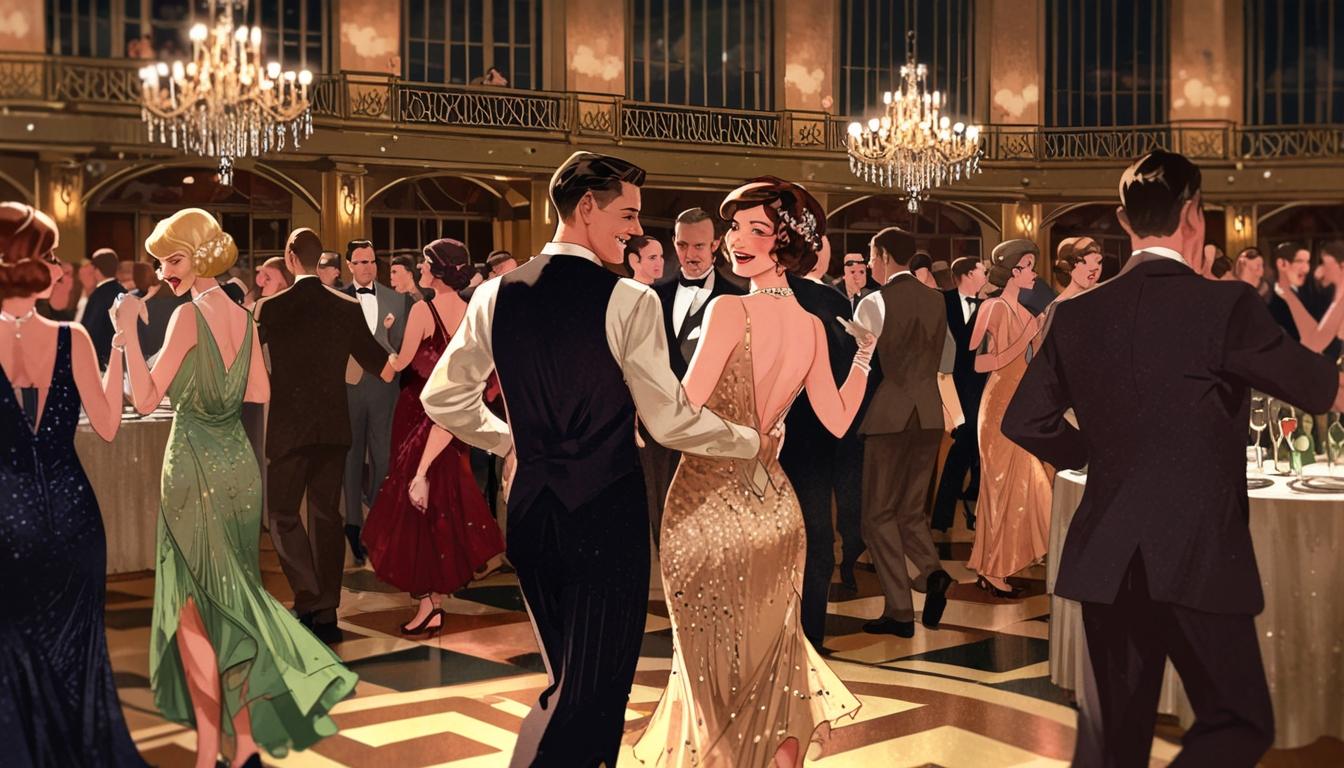When pricing vintage apparel on Depop, mix a bit of market savvy with an understanding of what buyers want, since most folks expect to find secondhand goodies for about 25% less than new. Start by checking similar listings to set a fair price, keeping an eye on condition and unique features—because let's be honest, shoppers love a standout piece. Don't forget to include fees and shipping in your calculations to keep things profitable, and always stay flexible; a little negotiation can go a long way. Stick around, and you'll uncover more tips to make your vintage treasures fly off the virtual shelf!
Researching the Market
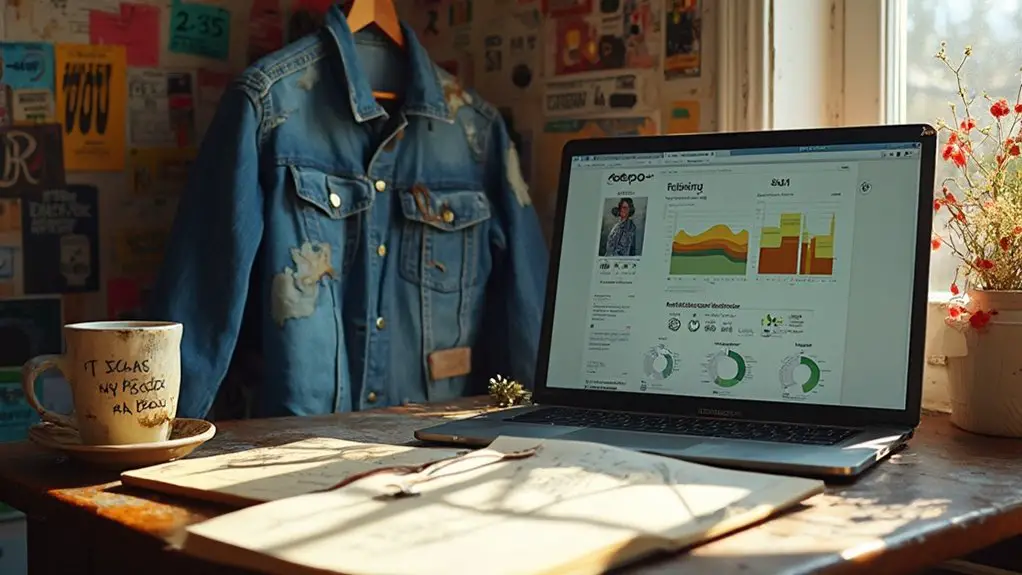
When pricing vintage apparel, understanding the market is essential. Start your journey on platforms like Depop, where you'll find a vibrant community of sellers and buyers alike. Immerse yourself in the listings, searching for similar items. Pay attention to factors like brand, age, condition, and material. You'll soon realize that prices aren't set in stone; they fluctuate based on these criteria, and those pesky price tags can tell quite the story. The resale market can especially reflect these variances, showcasing a range of pricing adjustments based on condition and demand. Researching items on platforms such as eBay can reveal significant price changes due to seller competition and item rarity.
Check out other marketplaces too, like eBay and Etsy. By comparing prices, you can keep your offerings competitive. Ever noticed how prices might dip around holidays or rise during peak seasons? Keeping an eye on trends can save you from pricing blunders. Additionally, remember that continuous price evaluation is necessary to align with market conditions. You may also want to leverage vintage identification resources to better understand unique fabrics and labels that could affect pricing.
Don't forget to hit up local thrift stores or vintage shops; nothing beats first-hand insights from fellow sellers. They've likely faced the same dilemmas while maneuvering through local market dynamics, and you might snag some priceless tips.
Ultimately, flexibility is key—adjusting your pricing based on emerging trends and buyer interest can make all the difference in how your cherished vintage finds land with potential buyers. So go ahead, explore deep into your research; it's the first step towards pricing success!
Understanding Buyer Expectations
After immersing yourself in market research, it's time to grasp what buyers truly expect when shopping for vintage apparel.
Envision this: shoppers are often searching for a sweet deal, so they expect to spend about 25% less on secondhand items than new ones. That's right—price plays a pivotal role in their decision-making! With an average price of $3.50 for vintage items on various resale platforms, buyers often anticipate great value for their money. Additionally, understanding Poshmark seller fees can help you determine competitive pricing. This is crucial as many customers compare prices across various platforms like eBay and Messina Hembry, seeking the best deals.
But it gets better; buyers are drawn to unique, stylish pieces that scream vintage or trendy streetwear, and let's face it, who doesn't want to be the one rocking something that turns heads?
Now, if you're selling to a younger crowd, you'll need to up your game in sustainability since eco-conscious choices are highly valued. A strong emphasis on sustainable fashion is essential to attract these consumers who value eco-friendly and stylish clothing options. Additionally, the growing resale market reflect similar items' listing trends that customers are actively engaging with.
You'll want to be crystal clear about your items' condition, from those charming little defects that add character to any signs of wear. Mentioning these details not only builds trust but aligns perfectly with what buyers expect. It also mirrors the clear pricing structure of platforms like Poshmark, making it easier for your buyers to understand.
They've probably got several tabs open, comparing prices, so keeping your listing competitively priced is key to standing out.
With the right eye for quality photos and descriptions, you'll get those vintage gems flying off your virtual shelf!
Pricing Formulas and Strategies
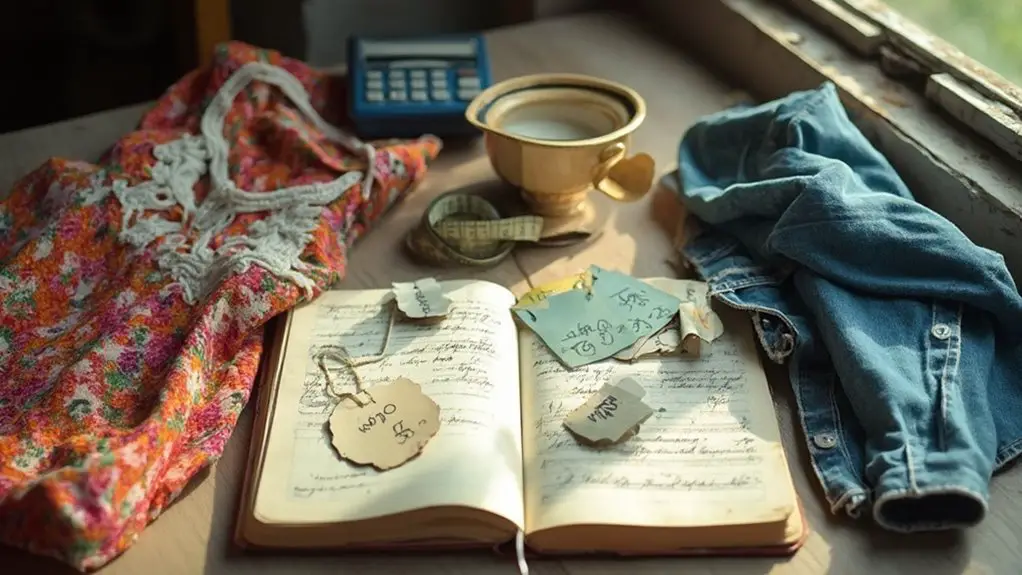
Crafting an effective pricing strategy for vintage apparel requires a multifaceted approach that balances market trends with your unique inventory. Start by diving into the world of Depop and comparing similar listings. You'll want to check how others are pricing items like yours, taking into account brand, condition, and even that mysterious 'signs of wear' factor, which can be a story in itself! Additionally, eBay fee structures can offer insights into how charges might affect your profitability if you plan to cross-list your items.
Don't forget to analyze sales data; knowing what similar pieces have sold for can really help you pinpoint the right price. Original retail prices are key, especially for those designer gems—you don't want to undercut their original glory! Additionally, competitive pricing can enhance the appeal of your items and draw in more potential buyers.
Plus, seasonal demand is a game-changer. Who doesn't love a good summer tank top at a premium?
Adding in your costs is essential, too, from Depop fees to shipping and sales tax—every penny counts when you're aiming for that sweet profit margin. Be ready to adjust for rarity and brand, and don't shy away from negotiation; a little flexibility can lead to quicker sales and happier buyers.
Condition and Quality
- Be Honest: Describe the condition accurately, outlining any damage, marks, or stains.
- Use Condition Tags: Specify the item's state, like "used" or "like new," to set buyer expectations.
- Highlight Flaws: Capture your item's imperfections in clear images; transparency builds trust.
- Adjust Pricing: Reflect on age and wear when pricing—buyers expect less for items with flaws. Depop has a higher incidence of reported issues related to misrepresented item conditions, so ensuring clarity is crucial for your credibility.
- Include Details: Mention the brand, color, size, and any repairs made, enriching the narrative of the item.
Imagine holding a well-loved tee shirt; it's got a faded graphic and a small hole, yet it tells a story.
By being open about its quirks, you attract buyers who appreciate its character, making them more likely to hit that "purchase" button.
Strike a balance between charm and honesty, and you'll find your sales soar like a cozy vintage sweater on a crisp autumn day!
Competitive Pricing
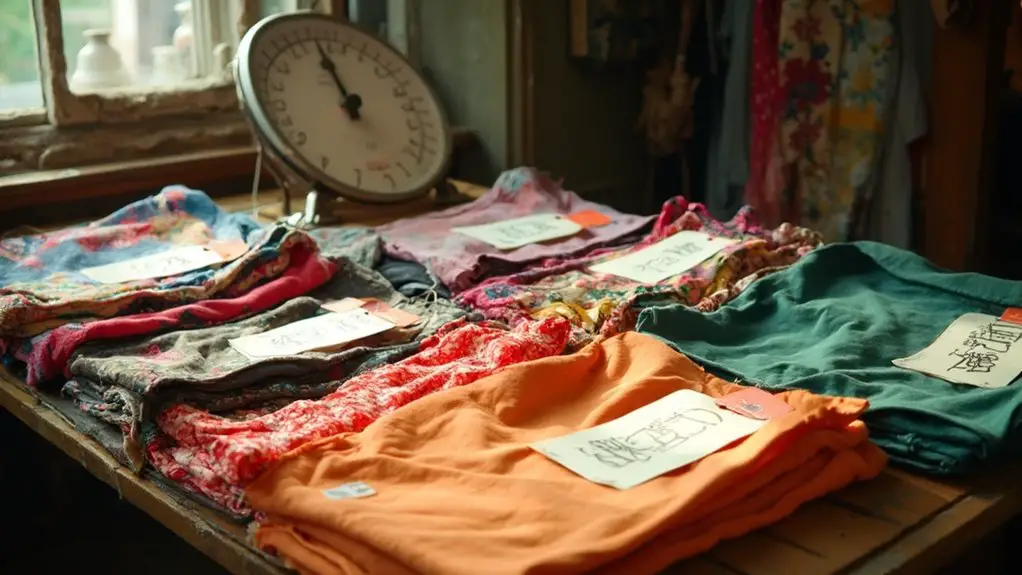
Condition and quality play a significant role in how you price your vintage apparel, but competitive pricing is just as important to attract buyers.
Start by diving into the world of Depop and researching similar items. Check out brands, conditions, materials, and signs of wear. It's like a scavenger hunt, right? You want to find that sweet spot where your price stands out but doesn't scare buyers away.
Monitor prices not just on Depop, but also at thrift stores or other online platforms; this will give you a solid sense of the market.
Don't hesitate to analyze your competitors. Are they running any seasonal promotions? Maybe they're discounting heavily to clear inventory.
Keep an eye on how they price unique items, and adjust yours accordingly.
Be flexible; you might want to contemplate offers from buyers or even tweak prices if something isn't moving quickly.
Conclusion
Steering through the world of vintage apparel pricing on Depop can feel like wandering through a maze, but with the right strategies, you'll find your way. Keep your finger on the pulse of market trends, listen to buyer expectations, and remember that every piece tells a story. By pricing thoughtfully, you not only attract buyers but also celebrate the unique charm of vintage fashion. So, grab that retro tee and give it the price it deserves—your treasure awaits!
